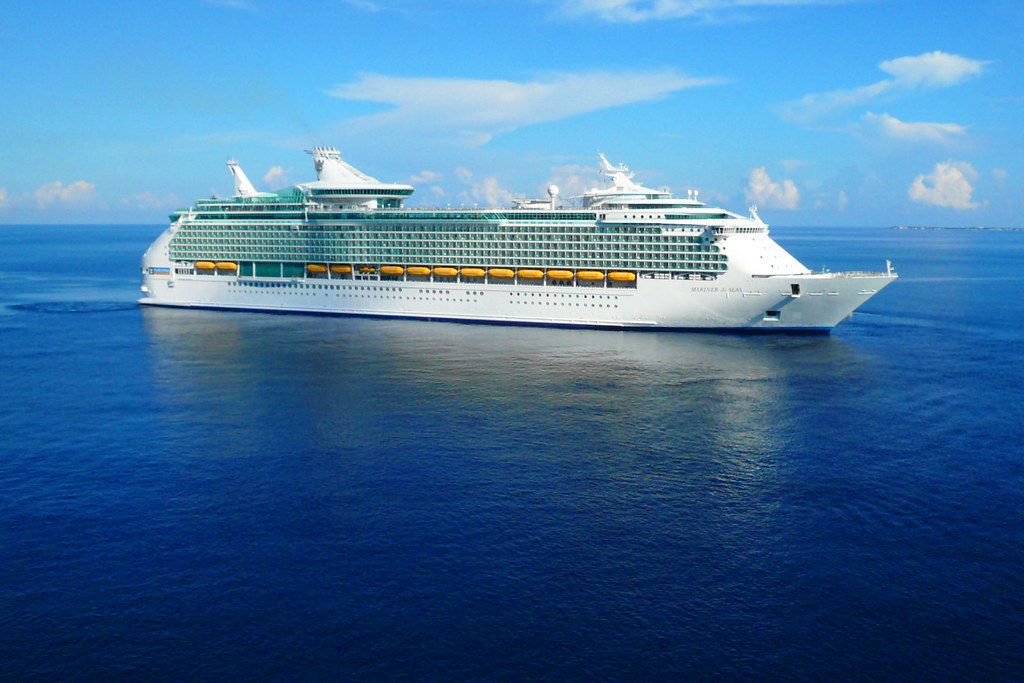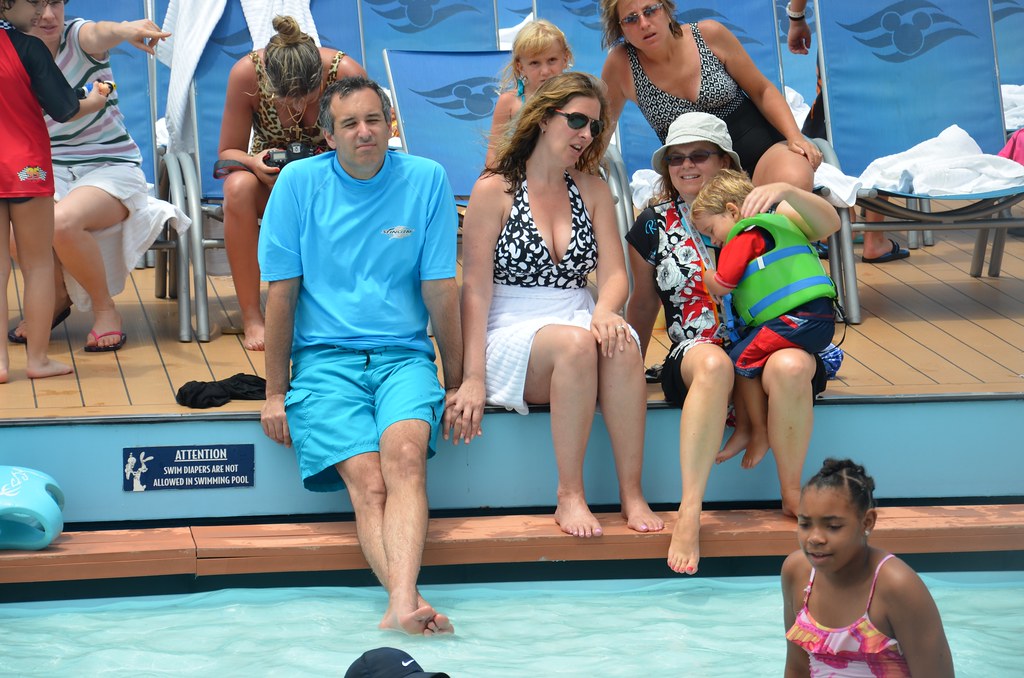How to avoid seasickness on a cruise! Top Tips to Ward Off Seasickness on Your Next Cruise Adventure

Seasickness is commonly experienced on cruise ships hence it shouldn’t be a major worry. But before we can implement effective prevention strategies on how to avoid seasickness on a cruise ship, we need to first understand its nature. This will ensure clarity and differentiation from other ailments.
What is Seasickness?

Seasickness is a form of motion sickness that occurs when you’re on a ship. It is caused by an inconsistency in the messages that your brain gets from your muscles, eyes, and inner ear. When you’re on a ship these three sensory systems are active:
- Your inner ear (vestibular system), containing fluid-filled canals that detect head movement and equilibrium.
- Your eyes, which role is to send visual information about your surroundings to your brain.
- Muscles and joints, that send signals about your body’s position and movement.
When these three sensory systems send conflicting information to your brain, it can become confused and trigger nausea, vomiting, dizziness, and other unpleasant symptoms.
Let’s rephrase it this way to help you understand: Your inner ear canal fluid may move back and forth as a result of the rocking motion of a boat or ship. Even though you’re sitting still in a cabin, this movement tells your brain that you’re moving.
If you can’t see outside the boat (for example, if you’re below deck or if it’s foggy), your eyes won’t be able to confirm the movement that your inner ear is sensing. This mismatch in information is what causes seasickness. But other stuff like strong smells, such as engine fumes or galley odors, can also worsen seasickness.
Symptoms of Seasickness
Seasickness manifests through a variety of symptoms, each contributing to the overall discomfort experienced by affected individuals:
- Vomiting and nausea: The main symptom of this condition is a lingering feeling of queasy and a strong want to throw up. People may have recurrent episodes of vomiting, which can cause dehydration and further discomfort.
- Dizziness and vertigo: One of the symptoms of seasickness is disorientation, which is characterized by a spinning or lightheaded feeling that is frequently accompanied by instability and trouble sustaining equilibrium.
- Cold sweats: Excessive perspiration, especially when it’s clammy or cold, is a typical physiological reaction to the stress that comes with being seasick, making discomfort levels worse.
- Headache: The sensory mismatch between inner ear and visual stimuli causes headaches and migraines in many people, which are exacerbated by the physical strain of vomiting and dehydration.
- Fatigue and lethargy: Being seasick can cause a severe feeling of weakness and weariness, which can lower one’s energy and make it harder to perform mental and physical tasks.
Additional Symptoms:
- Pale complexion: During stressful times, the body prioritizes essential functions over skin health, which can result in the skin appearing ashen or pallid.
- Increased salivation: One common physiological reaction to nausea and gastrointestinal distress is excessive salivation, which is sometimes accompanied by a bitter or metallic taste in the mouth.
- Loss of appetite: The enduring nausea and gastrointestinal distress brought on by seasickness cause a decreased desire for or incapacity to eat, which exacerbates weakness and exhaustion.
- Changes in mood and irritability: Prolonged discomfort and disorientation caused by seasickness can cause mood swings, increased irritability, and feelings of anxiety or agitation.
- Breathing too quickly or shallowly: People may find themselves breathing too quickly or gasping for oxygen due to increased worry, discomfort, or their body trying to adjust to metabolic imbalances.
These symptoms can range from mild to severe. In some cases, seasickness can be so severe that it can ruin a trip.
Factors Influencing Susceptibility to Seasickness

Some people are more susceptible to seasickness than others. Factors that can increase your risk include:
1. Age
- Children: Younger individuals, particularly children between the ages of 2 and 12, are often more susceptible to seasickness due to their developing vestibular systems. Their inner ear structures responsible for balance may not yet be fully developed, making them more prone to experiencing motion-induced discomfort.
- Pregnant Women: Hormonal changes during pregnancy can affect the vestibular system, leading to increased susceptibility to seasickness. Additionally, pregnant women may experience heightened sensitivity to motion due to changes in their center of gravity and increased pressure on abdominal organs.
2. Inner Ear Problems
Individuals with conditions affecting the inner ear, such as Meniere’s disease, labyrinthitis, or vestibular neuritis, are at a higher risk of experiencing seasickness. These conditions can disrupt the normal functioning of the vestibular system, leading to a heightened sensitivity to motion stimuli and an increased likelihood of experiencing symptoms like dizziness, vertigo, and nausea.
3. Migraine Headaches
Studies have shown that those who get migraines are more prone to seasickness. The vestibular system and sensory processing are disrupted in both migraines and seasickness, which can worsen symptoms of motion-induced pain. Furthermore, the light and sound sensitivities and visual abnormalities that are frequently linked to migraines might exacerbate nausea and vertigo during maritime travel.
By being aware of these variables, people can determine how susceptible they are to seasickness and make the necessary preparations before embarking on a maritime trip. It also underlines the significance of addressing individual characteristics and requirements when adopting measures for preventing and managing seasickness effectively.
How to Avoid Seasickness on a Cruise Ship
Here are some steps you can take to avoid seasickness on your cruise:
Before you board:
1. Medication
Practically speaking, if you’re wondering how to avoid seasickness on a cruise ship, one of the most effective steps you can take is to consider medication. Over-the-counter options like Dramamine or Bonine are specifically formulated to alleviate motion sickness symptoms. These medications work by reducing the activity of the vestibular system in the inner ear, which helps to minimize feelings of nausea and dizziness.
To ensure maximum effectiveness, it’s advisable to start taking the medication one or two days before your cruise. By doing so, you allow the medication to build up in your system, providing a stronger defense against seasickness once you’re on board. However, always remember to read the instructions carefully and consult your doctor if you have any pre-existing medical conditions or are unsure about using medication.
Another practical consideration is to have the medication readily available during your cruise. Carry it with you in your travel bag or keep it easily accessible in your cabin so that you can take it as needed throughout your journey. Additionally, be mindful of any potential side effects the medication may have, such as drowsiness, and plan accordingly to ensure a comfortable and enjoyable cruise experience.
2. Cabin selection

When it comes to selecting your cabin to minimize the chances of seasickness on a cruise ship, a strategic choice can make a significant difference in your comfort level. Aim for a cabin situated in the middle of the ship on a lower deck. This area experiences the least amount of motion compared to cabins located towards the front (bow) or back (aft) of the ship, as well as those on higher decks.
Opting for a cabin in the middle of the ship helps to mitigate the effects of rocking and swaying caused by the ocean’s movements. Lower decks typically experience less motion because they are closer to the ship’s center of gravity. This stability can help alleviate feelings of nausea and dizziness, contributing to a more pleasant cruise experience.
Furthermore, consider choosing a cabin with a window or balcony. Not only does this provide you with a source of natural light and fresh air, but it also offers a horizon view. Gazing at the horizon can help your brain to better orient itself and maintain balance, reducing the likelihood of seasickness.
By strategically selecting your cabin location, you can enhance your chances of enjoying a smooth and comfortable cruise without the bothersome effects of seasickness.
Once onboard:
1. Stay hydrated
When you’re onboard a cruise ship, staying hydrated is crucial to combat seasickness effectively. Dehydration can exacerbate symptoms, so make it a priority to sip on water or clear beverages throughout the day. Opt for drinks that replenish fluids without adding to dehydration, such as water or electrolyte-rich beverages.
To implement this strategy, carry a refillable water bottle with you and take regular sips, especially if you’re spending time outdoors or engaging in activities that may cause you to perspire. Avoid excessive consumption of sugary drinks or alcohol, as these can contribute to dehydration and worsen symptoms of seasickness.
By staying adequately hydrated, you can help maintain your body’s balance and resilience against seasickness, ensuring a more enjoyable cruise experience.
2. Diet

When it comes to managing seasickness once you’re onboard a cruise ship, paying attention to your diet can make a significant difference in how you feel. Opt for small, bland meals and snacks regularly throughout the day to help keep your stomach settled. Heavy, greasy, or spicy foods can exacerbate nausea and discomfort, so it’s best to avoid them.
Instead, choose light and easily digestible options such as crackers, toast, plain rice, or bananas. These foods can provide essential nutrients without overwhelming your digestive system. Additionally, consider incorporating ginger into your diet, as it is well-known for its anti-nausea properties. Ginger can be consumed in various forms, including candies, tea, or capsules, and can help alleviate feelings of nausea and promote digestive comfort.
By paying attention to your diet and choosing foods that are gentle on your stomach, you can help manage seasickness and enjoy a more pleasant cruise experience.
3. Fresh air
Once onboard a cruise ship, prioritizing time outdoors and seeking fresh air can significantly aid in managing seasickness. Spending time on deck, particularly in the middle of the ship, allows you to breathe in fresh air and focus on a stable point on the horizon. This deliberate action helps your inner ear and eyes align sensory information, reducing the discrepancy that often leads to feelings of motion sickness.
To implement this strategy effectively, take regular breaks from indoor activities and head to the outdoor decks. Find a comfortable spot where you can relax and enjoy the surroundings while focusing on a fixed point in the distance. This practice not only helps to minimize sensations of motion but also provides a welcome opportunity to unwind and appreciate the beauty of the sea.
By incorporating outdoor time into your cruise itinerary and leveraging the stabilizing effects of fresh air and a steady horizon view, you can enhance your ability to manage seasickness and maximize your enjoyment of the voyage.
4. Acupressure
Consider incorporating acupressure wristbands into your strategy for managing seasickness onboard a cruise ship. These wristbands apply pressure to a specific point on the wrist believed to help alleviate nausea. The gentle pressure exerted by the wristbands may help to rebalance the body’s energy flow, reducing feelings of queasiness and discomfort associated with motion sickness.
To use acupressure wristbands effectively, simply slip them onto your wrists before you embark on your cruise. Ensure that the bands are snug but not too tight, allowing for continuous pressure on the designated acupressure point. Wear the wristbands throughout your journey, especially during periods when you’re most likely to experience seasickness, such as during rough seas or when engaging in activities that involve significant motion.
By incorporating acupressure wristbands into your seasickness management plan, you can explore a natural and non-invasive method for finding relief from nausea and enjoying a smoother sailing experience.
YOU MAY ALSO LIKE: The Ultimate Guide to Cruise Packing Tips and Hacks (from a Professional Cruise Addict)
Additional Tips:
In addition to the previously mentioned strategies, there are several more tips you can incorporate to further enhance your ability to avoid seasickness and ensure a comfortable cruise experience:
- Avoid Reading or Looking at Screens: While onboard a cruise ship, it’s advisable to refrain from focusing on close objects such as books, smartphones, or tablets. Doing so can exacerbate feelings of nausea and dizziness, as the movement of the ship combined with the fixed gaze can create conflicting sensory signals. Instead, opt for activities that involve looking at the horizon or enjoying the scenery around you.
- Stay Calm and Relaxed: It’s essential to maintain a calm and relaxed demeanor while onboard to help mitigate symptoms of seasickness. Anxiety and stress can exacerbate feelings of nausea and discomfort, so practice deep breathing exercises and relaxation techniques if you start to feel uneasy. Find a quiet spot on the ship where you can take a few moments to center yourself and focus on your breathing, allowing your body to naturally adjust to the motion of the sea.
- Engage in Gentle Movement: Counterintuitive as it may seem, engaging in gentle movement can help alleviate symptoms of seasickness for some individuals. Take short walks around the ship or participate in low-impact activities such as tai chi or yoga to promote circulation and maintain balance. However, avoid strenuous exercises or activities that involve rapid movements, as these can exacerbate feelings of motion sickness.
By incorporating these tips into your seasickness prevention plan and maintaining a proactive approach to managing symptoms, you can significantly reduce your chances of experiencing discomfort and enjoy a smooth sailing experience on your cruise.
I hope this helps…wishing you smooth sailing in advance!
